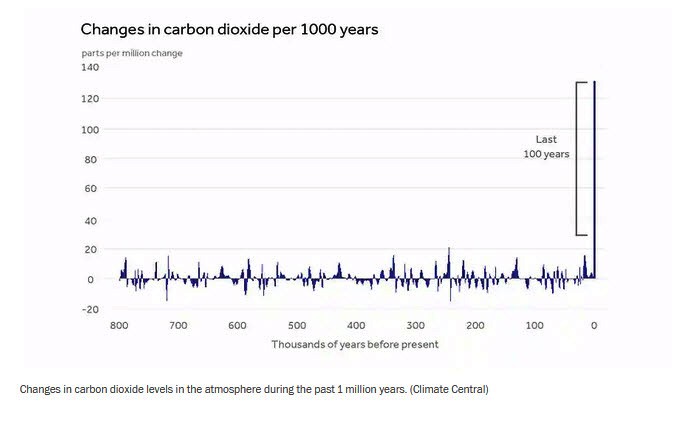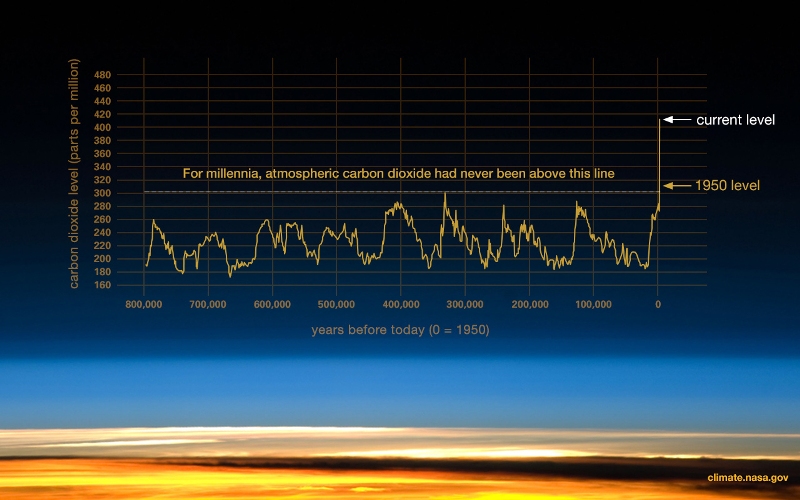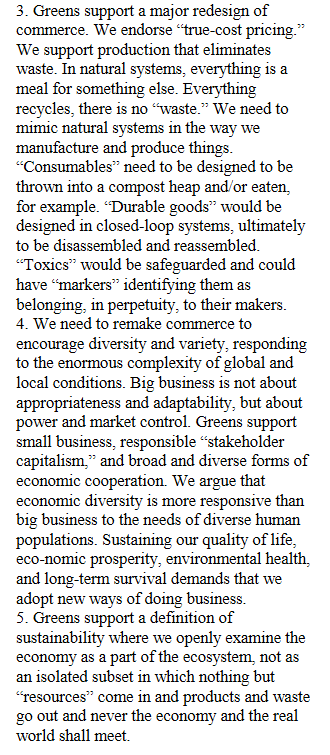Environmental full-cost accounting
'Life Cycle Engineering' / 'Generation Forward' Planning
- 'Environmental Full-Cost Accounting - True Pricing'
GreenPolicy360 Siterunner: Beginning in the mid-1960s, the concept of Environmental Protection began to come into political thought through a modern environmental movement. Your GreenPolicy360 siterunner was fortunate to be a part of this movement over the years, and years that turned into decades. In the 1990's, as a drafter of a platform with Gov. Jerry Brown and then a key drafter of the founding Green Party platform, the environmental ideas continued to evolve and grow. I introduced 'Eco-nomics' as a school of thought, believing it to be a core of green political economy that could find relevance in a new 'smart economics'. Whether economic policies to protect 'the Commons', or design and manufacturing that is meant to rethink how we can reduce pollution and waste, the idea of addressing external costs, 'externalities', with intelligent approaches was at the top of the new green agenda.
- "True-cost / True-price Eco-nomics and Climate Change"
Confronting Climate Externalities
Measuring Full Costs: Dealing with Damage to 'The Commons'
- Climate Change Costs, Environmental Impact Costs, Social Costs, Health Costs
- Add in the full costs, the true costs of Fossil Fuels
- Emissions cost plus, call it EC+, the Real-World Costs of Oil/Gas
··········································································································
The nation’s top science panel proposes ways to set a fair price for cutting tomorrow’s climate risks...
Currently set at $36 per ton of carbon dioxide, the metric is produced using a complex, and contentious, set of models estimating a host of future costs to society related to rising temperatures and seas, then using a longstanding economic tool, a discount rate, to gauge how much it is worth today to limit those harms generations hence. (For context, the United States emitted about 5.1 billion tons of CO2 in 2015, out of a global total of 36 billion.)
... the social cost of carbon underpins justifications for policies dealing with everything from power plants to car mileage to refrigerator efficiency. The carbon valuation has already helped shape 79 regulations.
The strongest sign of a coming challenge to the social cost calculation came in a post-election memorandum from Thomas Pyle, who was then president of the industry-funded American Energy Alliance and Institute for Energy Research and who now leads the Trump transition team for the Department of Energy. In the memo, he predicted policies resulting in “ending the use of the social cost of carbon in federal rule makings.”
····································································
Economic models significantly underestimate climate change risks -- It’s almost impossible to calculate how many trillions of dollars it could cost.
Review of Environmental Economics and Policy
June 2018
Source: London School of Economics
The paper's authors, Thomas Stoerk of the Environmental Defense Fund, Gernot Wagner of the Harvard University Center for the Environment and Bob Ward of the ESRC Centre for Climate Change Economics and Policy at the London School of Economics and Political Science, draw attention to "mounting evidence that current economic models of the aggregate global impacts of climate change are inadequate in their treatment of uncertainty and grossly underestimate potential future risks."
They warn that the "integrated assessment models" used by economists "largely ignore the potential for 'tipping points' beyond which impacts accelerate, become unstoppable, or become irreversible." As a result "they inadequately account for the potential damages from climate change, especially at moderate to high levels of warming," due to rises in global mean temperature of more than 2 Celsius degrees.
The authors draw attention to "a major discrepancy between scientific and economic estimates of the impacts of unmanaged future climate change." They state: "These discrepancies between the physical and the economic impact estimates are large, and they matter. However, physical impacts are often not translated into monetary terms and they have largely been ignored by climate economists."
Social Costs, Full Costs of Carbon
From GreenPolicy friend Andrew Revkin: "This ProPublica article just scrapes the surface on why there's no easy answer in deciding how much to invest now to limit downside risk to future generations ... there’s probably no more consequential and contentious a target for the incoming administration than an arcane metric called the “social cost of carbon.”
US Climate Politics 2015-2017: Risks and Costs Are Real and Growing
"Thin Blue", Protecting National & Global Security
- Most Strategically Vital of Earth's Life Enabling Resources, the "Thin Blue" Atmosphere
GreenPolicy360 Siterunner (continued): A Case Study in External Costs... 'Externalities' , have profound consequences when we look to the "Thin Blue Layer", the atmosphere of the Earth that comprises an ultimate element of environmental security.
The developing field of atmospheric science and Earth Science conducted from new space platforms and research missions is in its early stages even as the extent of emissions/externalities with profound potential for damaging the atmosphere are globally emitted by industrialization. These chemical compounds result in a human-caused 'atmospheric mix' that is, in ways yet to be determined, changing the future of the thin layer of atmosphere surrounding Earth. Although it should be manifestly evident that scientific study is a necessity at this point in history yet, in 2015, in the US Congress, a climate change 'denial caucus' acting in the House science committee proposed a number of severe cuts to space-based NASA Earth Science research. Only as a result of strong objections were the proposed cuts restored to the final 2016 US appropriations budget.
Environmental security is an essential element of national security, as we at GreenPolicy have been bringing forward in online discourse and political outreach. We join with our associated site, Strategic Demands, to advocate for policies that look more astutely at environmental security issues directly tied to national security issues that face each individual nations and the community of nations. The Paris climate agreement of December 2015 is a step in this direction, recognizing that the costs of climate change and 'externalities' produced by human action are a clear risk with potential for catastrophic cost.
- The costs and questions we are addressing here focus on 'New Definitions of Environmental and National Security.'
- The consequential realities are rising across the globe to become existential threats.
- ○
- ○
····································································
"Externalities" (Harmful Externalities)
In economics, an externality is the cost or benefit that affects a party who did not choose to incur that cost or benefit.
For example, manufacturing activities that cause air pollution impose health and clean-up costs on the whole society, whereas the neighbors of an individual who chooses to fire-proof his home may benefit from a reduced risk of a fire spreading to their own houses. If external costs exist, such as pollution, the producer may choose to produce more of the product than would be produced if the producer were required to pay all associated environmental costs. If there are external benefits, such as in public safety, less of the good may be produced than would be the case if the producer were to receive payment for the external benefits to others. For the purpose of these statements, overall cost and benefit to society is defined as the sum of the imputed monetary value of benefits and costs to all parties involved... Unregulated markets in goods or services with significant externalities generate prices that do not reflect the full social costs... to societies... (-- Wikipedia)
"Environmental full-cost accounting"
Environmental full-cost accounting (EFCA) -- Cost accounting that traces direct costs and allocates indirect costs by collecting and presenting information about the possible environmental, social and economic costs and benefits or advantages – in short, about the "triple bottom line" – for each proposed alternative. It is also known as true-cost accounting (TCA), but, as definitions for "true" and "full" are inherently subjective, experts consider both terms problematic.
Since costs and advantages are usually considered in terms of environmental, economic and social impacts, full or true cost efforts are collectively called the "triple bottom line". A large number of standards now exist in this area including Ecological Footprint, eco-labels, and the United Nations International Council for Local Environmental Initiatives approach to triple bottom line using the ecoBudget metric...
Because of this evolution of terminology in public sector use especially, the term full-cost accounting is now more commonly used in management accounting, e.g. infrastructure management and finance. Use of the terms FCA or TCA usually indicate relatively conservative extensions of current management practices, and incremental improvements to GAAP to deal with waste output or resource input... (Wikipedia)
····································································
Green Politics: Proposing Environmental Full-Cost Accounting
SJS / Siterunner: In the founding Green Party Platform of the US, as I drafted Green politics in the mid-1990's,' the thought was to find a way to deal with the economic problem of hidden, harmful costs of production/distribution supply chains and economics.
True-price/full-cost accounting was a foundation concept on which we developed green ideas to deal with a wide-spectrum of environmental, green business challenges.
The smog in Los Angeles in the 1950's for example, which was as bad as any city internationally, had profound negative consequences, especially damaging children's health. The costs were significant and real, generational, as reduced lung capacity and in-air particulates led to a host of medical conditions. Political leaders like George Brown and Jerry Brown realized much was needed to be done and they went to work. I joined in, having opportunities to work with both men over the next decades. A high point was working directly with Jerry in the 1992 presidential campaign, especially on the campaign platform, a history-making challenge as we envisioned and pulled together the "We the People Platform-in-Progress"."
Today, we continue a decades-long effort, one that extends back to the work of George E. Brown and the U.S. National Academy of Sciences initial climate report in 1978 that sent a warning of the costs of global warming.
We/GreenPolicy360 continue the work to price carbon, with true price-full cost accounting. We have proposed new descriptors for emissions-as-externalities, EC+. It is long overdue to price carbon emissions-externalities in ways that profoundly address the climate crisis and move economies with all due speed toward net-zero policy and a clean energy future.
○
Update/LA Times-March 2015 -- "Clean air is good. Here's a tip of the cap to all who worked to make LA a model for clean air regs in CA, the nation, and green best practices that have been out in front, adopted by cities and states around the world... The kids and kid's health say Thanks!"
The beginnings of the US green movement in law and practice can be traced to the 60s/70s era and its green ideas, many of which came from California, and the subsequent foundation of environmental laws in California and the US.
○
SJS: As an extension of this decades of green work your GreenPolicy siterunner proposed in the drafting of the founding Green Party Platform of the US Green Party that special attention be given to "Eco-nomics" and to "externalities", adding to the Key Values and document language a focus on full-/true-cost accounting as a method to move toward 'smart' and sustainable eco-nomics and healthy growth. I wrote the following and then went on to address how economics/energy/policy could make a difference:
"SJS: 'TRUE-COST PRICING', which reflects the 'realistic' cost of products including ecological damage and externalities caused during the manufacturing process, must be adopted to achieve accurate financial accounting. Only with a shift in the way we are seeing, can we accurately assess our energy choices and costs – and the long-term impacts of the energy decisions we are making."
Greens support a major redesign of commerce. We endorse 'true-cost pricing'.
Excerpt from the US Green Party Platform - 2000:
Economic Sustainability and Eco-nomics
SJS: Sustaining our quality of life, eco-nomic prosperity, environmental health, and long-term survival demands that we adopt new ways of doing business. Greens support a definition of sustainability where we openly examine the economy as a part of the ecosystem, not as an isolated subset in which nothing but “resources” come in and products and waste go out and never the economy and the real world shall meet.
The issues of damaging growth, as a result of ill-considered development, are many but clearly the need for smarter, greener ways to bring quality of life, security and progress are the challenge of our times.
○
In the U.S. and across the globe, based on 'out in front' green environmental precedents created in the law, regulations and practice, the changes, shifts, new directions for smart, well-managed and sustainable environmental policies are beginning to take effect even as fossil fuel, polluting, toxic producing industries and non-renewable energy companies look to roll-back progress.
The political issues and debates, such as the "precautionary principle vs cost-benefit analysis", will continue as green leadership and green best practices continue to push forward.
As issues arise in how best to rapidly adopt renewable energy, the full-costs of fossil fuels must be made known, discussed widely, and taken into account. Greens have a special role in this educational and shift in markets from fossil fuels to renewable alternatives. With essential full-cost information as a basis for decision-making, the renewable, clean energy market will fast become more extended and competitive.
This is key to overall goals to reduce greenhouse gases and grow resilient, sustainable economies. True-pricing and environmental full-cost accounting are green next steps.
It is time for a price on carbon.
-=-=-=-=-=-=-=-=-=-=-
More References
Environmental justice emerged as a concept in the United States in the early 1980s. The term has two distinct uses with the more common usage describing a social movement that focuses on the “fair” distribution of environmental benefits and burdens. The other use is an interdisciplinary body of social science literature that includes theories of the environment and justice, environmental laws and their implementations, environmental policy and planning and governance for development and sustainability, and political ecology.
-- Wikipedia https://en.wikipedia.org/wiki/Environmental_justice
The "golden era" of American environmental lawmaking in the 1960s and 1970s saw twenty-two pieces of major environmental legislation (including the Clean Air Act, the Clean Water Act, and the Endangered Species Act) passed by bipartisan majorities in Congress and signed into law by presidents of both parties. But since then partisanship, the dramatic movement of Republicans to the right, and political brinksmanship have led to legislative gridlock on environmental issues. In this book, Christopher Klyza and David Sousa argue that the longstanding legislative stalemate at the national level has forced environmental policymaking onto other pathways.
A Fierce Green Fire --- 2003 --- by Philip Shabecoff
"Aldo Leopold at 100" ---- Leopold Links / ASU
When the Earth Moved - April 15, Earth Day, 2013 / New Yorker
New Economic Visions: Beyond the Old Definitions
New Definitions of National Security
Environmental Security, National Security
Global Sustainability & Community Resilience (PDF)
·········································································
Green Ecological Concepts and New Eco-nomics
New ways to envision sustainable development and growth
Eco-nomics, a 21st Century paradigm in development @GreenPolicy360
Protecting & Preserving Life...Biodiversity...Ecosystems
Destroying Life, Species, Natural Resources, our Environment
The 'Ocean Commons', Acting to Sustain the Oceans of the Planet'
"What percentage of the Earth is covered by oceans?"'
- 71% --- Via http://www.noaa.gov/oceans-coasts
Sea-Level Rise: Worldwide Impact
○
History of Environmental Regulation: Selected Reading
Environmental regulation (Via Wikipedia)
Command and Control (CAC): The use of Command and Control in regulation involves the government or similar body to “command” the reduction of pollution (e.g. setting emissions levels) levels and to “control” the manner in which it is achieved (e.g. by installing pollution-control technologies). It has been argued that CAC has
the potential to be effective under certain conditions. Often its effectiveness can be determined by whether the problem has a diffuse or a point source. A CAC approach is relatively compatible with point source and regulation of these can often achieve success. On the other hand, CAC struggles to appropriately tackle issues that have a diffuse, non-point source. Evans draws on the following example: “it is relatively easy to regulate the emissions from 10 large coal burning power stations in a single country, but far less easy to monitor the emissions caused by millions of motorists or the effluent discharges from tens of thousands of farms across the world.”
In Environmental Policy, CAC is characterised by 3 different types of standards, the use of the standards is determined by various factors, including the nature of the environmental problem and the administrative capacities of the governing body:
- Environmental Standards. These are centrally driven standards. A legally enforceable numerical limit is often used to determine the 'standard', but the term can be used more broadly, describing more general rules about acceptability.
- Target Standards. The condition of the environment into which the pollutant enters is central to these standards. It can be subdivided into ambient and receptor standards. Ambient standards set the targets that apply to the regulators and policy makers. Whereas Receptor standards apply to the regulated and state that a specified maximum level is not to be exceeded.
- Performance Standards. These determine what releases of a pollutant into the environment are acceptable.
It has been suggested that if compliance reaches appropriate levels, there may be a good degree of certainty of environmental results. CAC regulation has the potential to lead to a more rapid resolution of certain environmental policy objectives. It may also provide clarity to those that are subject to the regulation. There may be a clearer understanding of what is required and how to meet those requirements. It has been argued that the use of the CAC approach to solve environmental problems can result in unexpected consequences if the application is conducted uncritically.
Much of environmental policy to date has been associated with the term Disjointed Incrementalism. This term was coined by Lindblom and describes the small and often unplanned changes that have occurred in the field of environmental regulation. These changes in regulation often address small-scale problems with laws tuned towards the particular area of concern. This approach is criticized on the grounds that it does not take into account the wider causes of environmental issues.
International environmental agreements
Montreal Protocol
The 1987 Montreal Protocol is commonly cited as a CAC success story at international level. The aim of the agreement was to limit the release of Chlorofluorocarbons into the atmosphere and subsequently halt the depletion of Ozone (O3) in the stratosphere.
There were a number of factors that contributed to Montreal’s success, these included:
- The problem and solution were both clearly defined and supported by industry (albeit not initially);
- The Ozone hole was easily measurable;
- There was an effective scientific lobbying alliance that played a key role in convincing the US Government and the commercial sector (in particular DuPont, then one of the largest manufacturers of CFCs).
Defining this agreement as a CAC approach is slightly problematic as the agreement does not directly instruct states how to meet their targets.
However, the aim of the Montreal Protocol has been to eliminate the source of CFC emissions, as a result the only really feasible way for a state to achieve this would be through a ban on substances related to Ozone depletion. Montreal is considered by some to be a 'special case' of a successful CAC approach.
Climate change
See also: Kyoto Protocol
The traditional model of command and control typically involved areas of environmental concern being dealt with by national governments. In recent decades, transboundary environmental problems have risen in prominence. This shift has exposed many of the limitations of a command and control approach when it is applied to a larger and more complex arena. Climate change is often used to exemplify the perceived failings of this regulatory approach. Climate change is good example of a concern that is complex, full of uncertainties and difficult for many people to understand. This may go someway in explaining the apparent incompatibility of climate change and a CAC approach. Mitigating climate change requires action of a much more proactive nature than traditional CAC models are able to deliver. One reason for the lack of compatibility with many international environmental agreements is the manner in which the international community is organised. International law cannot be implemented in the same way as law at national level. Given that the CAC approach relies heavily on prohibiting certain activities and then enforcing it through sanctions makes the scaling-up to international level problematic. Without a strong international enforcement body it is unlikely that CAC will be an effective tool for dealing with most transboundary environmental issues, climate change included.
The future of CAC in environmental policy
The international nature of many contemporary environmental issues makes CAC regulatory approaches difficult. Since the 1970s enthusiasm for the implementation of economic incentives for regulation has been on the increase. This is due, in part, to the disenchantment with command and control.
The shift away from CAC does not seem to be slowing, the increased participation of a variety of actors may be the answer. The role of environmental NGOs in policy making has changed drastically in recent decades. Their numbers and the influence they exert over national governments and negotiations at international level has risen. The involvement of NGOs has assisted the development of international policy in a number of ways. A great deal of environmental policy has been influenced by research collected by these organisations. They also act as whistleblowers, updating the regulators of progress and compliance. A blend of different approaches, involving a range of actors and regulatory types may be the best answer. However, it is likely that many governments will persist with CAC because of the political benefits and the fact that it is not always as inflexible and inefficient as many economists would suggest.
○
- Air Pollution
- Air Quality
- Anthropocene
- Atmospheric Science
- Biodiversity
- Earth Law
- Earth Observations
- Earth Science
- Earth Science from Space
- Earth System Science
- Eco-nomics
- Ecological Economics
- Ecology Studies
- Economic Justice
- Environmental Full-cost Accounting
- Environmental Security, National Security
- EOS eco Operating System
- Externalities
- Global Security
- Green Platform
- Green Politics
- Health
- Land Ethic
- Natural Capital
- Natural Resources
- New Space
- Planet Citizen
- Planet Citizens
- Planet Scientist
- Planet Citizens, Planet Scientists
- Pollution
- Resilience
- Social Justice
- Strategic Demands
- Sustainability
- Sustainability Policies
- ThinBlueLayer
- Threat Multiplier
- Whole Earth












